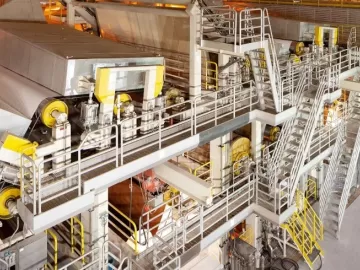Cartiera Confalone Tissue Paper Line Cuts the Cost of Compressed Air
The pulp and paper industry depends on reliable sources of energy, water and compressed air; maintaining cost-effective supplies of these utilities is important to every successful business. Within paper making processes, a clean, oil-free air supply is essential for the reliable operation of pneumatic equipment and a high-quality end product. For one manufacturer in Italy, the selection of an oil-free turbocompressor enabled both operational and maintenance costs to be reduced.




